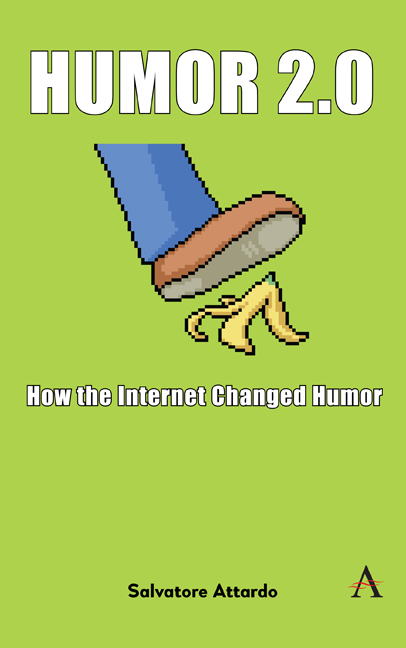13 - A General Theory of Grumpy Cats
Published online by Cambridge University Press: 28 February 2024
Summary
The job of the humor scholar is to tackle difficult questions, which other scholars shy from. In this chapter, I will address the issue of why is Grumpy Cat funny?
Anthropomorphism
Grumpy Cat, the feline named in the title of this chapter, was an internet celebrity. The actual name of the cat was Tardar Sauce (note the spelling). It lived for seven years (2012–2019), according to Wikipedia (https://en.wikipedia.org/wiki/Grumpy_Cat). Grumpy Cat's death was reported by the international press, for example, The NY Times, The Guardian, Le Monde and Die Frankfurter Allgemeine Zeitung.
The cat has its own website (https://www.grumpycats.com) where one can buy merchandise with the cat's likeness, such as a calendar (Figure 13.1). By any standards, Grumpy Cat is an internet star, according to Wikipedia, “As of March 5, 2019, Grumpy Cat had 8.3 million total followers on Facebook, 2.4 million followers on Instagram and 1.5 million followers on Twitter.”
Having established that Grumpy Cat is better known than most people, we need to attempt to explicate the source of the animal's fame. Unquestionably its “grumpy” facial expression was the starting point of its fame. Apparently, the grumpy facial expression was the result of an underbite and feline dwarfism (Wikipedia). Be that as it may, it is unquestionable that the cat's expression looks grumpy. Here a possible explanation seems to have prima facie (pun intended) credibility: people recognize the expression of the cat because it matches the facial expression that in humans is associated with bad (grumpy) mood.
Now it is the case that facial expressions in non-human animals exist and have been investigated (see for example a review in Waller & Micheletta, 2013) and in the case of mammals bear remarkable similarity to the facial expressions of humans or are functionally equivalent to them, for example in primates the bared teeth expression is equivalent to the human smile, indicating benevolence.
The fact that some animals may display facial expressions and express emotions and desires that are recognizable to humans is probably the ultimate source of anthropomorphism, that is, attributing human-like characteristics to animals. I am taking the Grumpy Cat–type memes to be the quintessential expression of animal anthropomorphization.
Of course the anthropomorphization and human fascination with cats (and other animals, domestic and not) did not begin with the internet.
Information
- Type
- Chapter
- Information
- Humor 2.0How the Internet Changed Humor, pp. 131 - 138Publisher: Anthem PressPrint publication year: 2023
